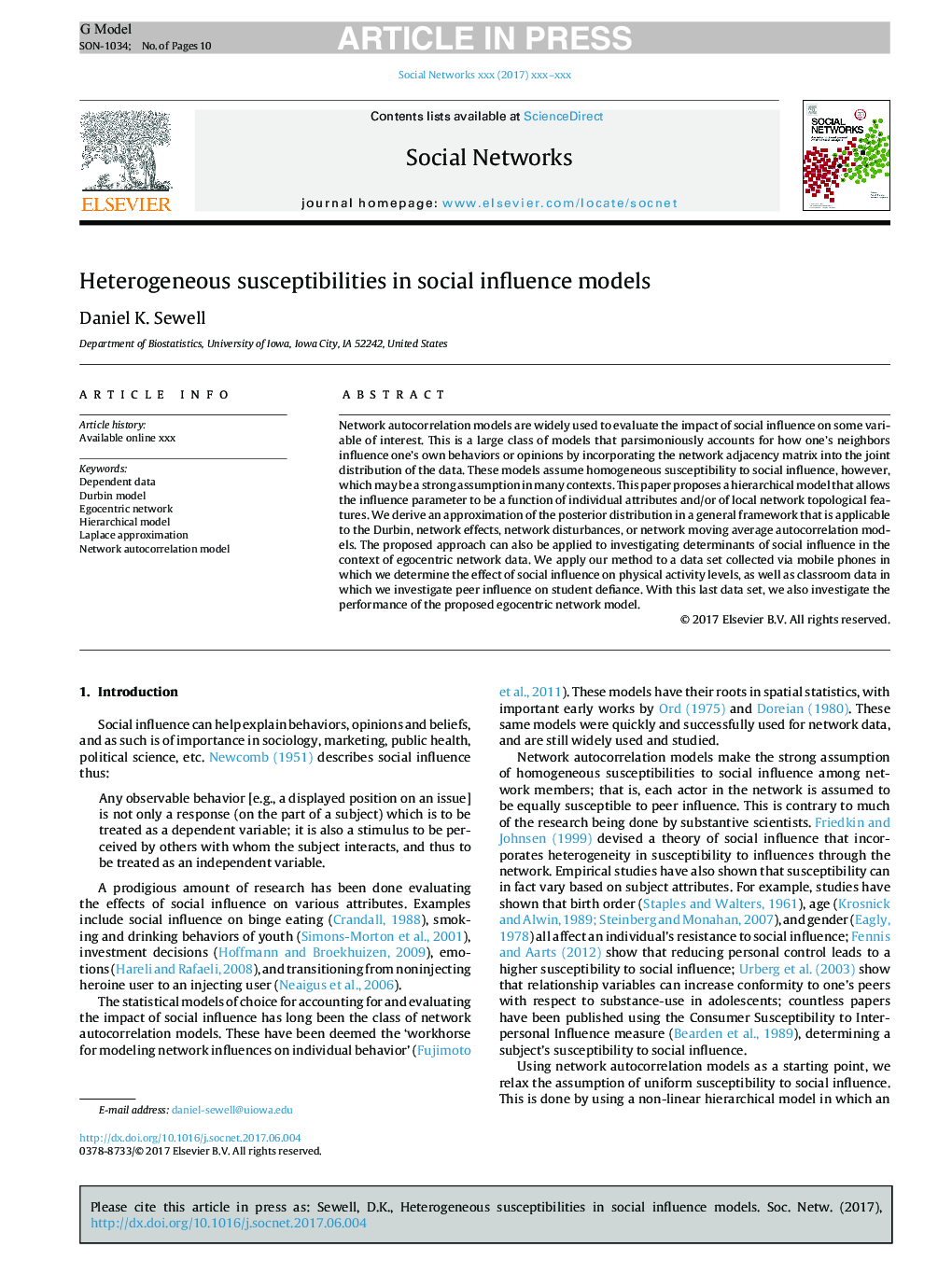| Article ID | Journal | Published Year | Pages | File Type |
|---|---|---|---|---|
| 7538352 | Social Networks | 2018 | 10 Pages |
Abstract
Network autocorrelation models are widely used to evaluate the impact of social influence on some variable of interest. This is a large class of models that parsimoniously accounts for how one's neighbors influence one's own behaviors or opinions by incorporating the network adjacency matrix into the joint distribution of the data. These models assume homogeneous susceptibility to social influence, however, which may be a strong assumption in many contexts. This paper proposes a hierarchical model that allows the influence parameter to be a function of individual attributes and/or of local network topological features. We derive an approximation of the posterior distribution in a general framework that is applicable to the Durbin, network effects, network disturbances, or network moving average autocorrelation models. The proposed approach can also be applied to investigating determinants of social influence in the context of egocentric network data. We apply our method to a data set collected via mobile phones in which we determine the effect of social influence on physical activity levels, as well as classroom data in which we investigate peer influence on student defiance. With this last data set, we also investigate the performance of the proposed egocentric network model.
Related Topics
Physical Sciences and Engineering
Mathematics
Statistics and Probability
Authors
Daniel K. Sewell,
